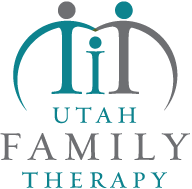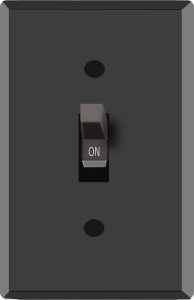What should you do when have a trigger that makes you want to act out on a compulsive behavior?
Crisis Plan and an Addiction Relapse Prevention Plan for any behavior that you risk of relapse, addictive behaviors to porn, sex, internet addiction, or mental health challenges like depression, suicide, anxiety and past trauma is a must.
No matter what you may be struggling with, creating a relapse prevention plan, will help you find greater success in your recovery.
One of the keys to recovering from addiction is being able to recognize and manage the triggers and avoid your risk of relapse. Collection of ideas for being able to deal with those triggers and prevent a relapse are:
Step 1: Recognize Relapse Triggers
Individuals in recovery are taught to recognize their triggers and the skills to manage them.
Triggers are like a light switch that can be turned on and off but when it turns on, it’s harder to turn it off.
The first key is to creating your crisis plan is to recognize the triggers. The beginning of your plan would be to start practicing recognition first.
What are some of your common triggers?‘
What do you see as a beginning trigger and desire to act out on the negative behavior?
You need to be heighten your awareness and take a close look at your:
- Situations
- Environments
- Decisions
- Emotions (stress, anger, anxiety, overwhelm, etc.)
- Habits
- Mindset
- Impact of sleep
- Time with friends
… that you feel in the process. If you are aware, you can usually trace your situation, environment, decision or feeling back to something that was a trigger.
Tracing this emotion back is the beginning of your relapse prevention plan and a huge part of managing triggers. When you can see what it is, to begin with, you will discover the changes you need to make.
Avoid mental relapse, you may be triggering yourself without realizing it.
In the case of being able to recognize what may be causing the triggers is the first part of your plan.
Step 2: Specific Plan For the Trigger
The next step as a relapse prevention intervention would be to have a specific plan in mind for when that specific triggers experienced or you’re seeing relapse warning signs.

An example would be, You feel triggered when you’re surfing the internet, or when you’re on social media You recognize that these are triggers because you’ve experienced them many times.
As part of your relapse prevention, you followed step 1, you know what the triggers are, and you have a plan in place to be able to address each trigger.
Having a specific crisis plan will have a far-reaching impact; knowing that the trigger sets in motion things that are very powerful inside of your body and your brain.
I know that once I start down that road, it’s tough to come back.
Step 3: Connection

Have a list of people that care so you can reach out when you’re feeling down or triggered.
On that list you might have a best friend or a series of close friends or family members who you can call or text with open honesty.
You need to be able to say, ‘I need to talk for a minute. I need a little bit of support right now because I’m having a difficult moment.’
Depending on your openness and your level of trust with that person, you may or may not get into the actual details of why you need some support and are on the risk of relapse.
You could reach out and say, ‘Hey I need someone to talk to for a minute. Can you hang out, talk on the phone, or get together for a few minutes?’

Reaching out to somebody close to you who is prepared for that kind of situation would be an excellent thing to do and is a healthy life skill.
Step 4: Have Short Routines
What’s your routine in the morning?
As part of your relapse prevention plan, you should have a short morning and evening routines that you run through to help keep you engaged in life.
Start to identify where your triggers occur so that you can put a crisis plan in place. For example, let’s say that every morning you’re triggered in the shower:
Be mindful and tell yourself, ‘I’m going to shorten my shower. I’m going to get in and get out. I know the longer I remain in the shower, the trigger intensifies.’
You know that if you spend time lingering on the thought of acting out the chances of you giving into the trigger increases and the effectiveness of maintaining sobriety goes down.
Put in place techniques that promote healthy life skills and the ability to manage your fears of relapses.
Step 5: Change Your Pattern
As you recognize the triggers in your life, change your daily patterns to manage them.
If you know you’ll be triggered, change the pattern to interrupt this trigger.
For example, set an appointment that’s going to need you to act quickly. You must not linger and think about the triggers.
Avoid spiraling emotions to avoid emotional relapse. Emotional relapse makes it difficult to think clearly.
Step 6: Have Specific Crisis Plan
Knowing you have a very specific plan of what you will be doing will help you to keep your mind focused, instead of continuously thinking about the behavior you want to stop.
A specific plan you could have is:
- Wake up at 6:45
- Eat breakfast by 7:15
- Set a timer and shower for 5 min.
- Be on time for the appointment at 7:30.
To restate, when creating a crisis plan or a relapse prevention plan, you will stay mindful and keep your brain engaged. There won’t be time for you to worry about your triggers.
Stay involved in accomplishing specific activities.
Any triggers that come, you’ll be able to manage them more efficiently.
Utah Family Therapy Group Outpatient Program can help you manage your stress, anxiety, depression, OCD, trauma and pornography.
Update to this article below.
Crisis Plan From Client
Below is a crisis plan that from a young lady that has been mindful of her situation and created a Crisis Plan for her anxiety and depression.
This is an outline to help you, as an example of a crisis plan you could follow.
Here’s the basics of a ‘Crisis Plan’ or in this case also a ‘Suicide Prevention Plan’:
Future Relapse Prevention Outline
Lifestyle actions to stay well:
- Create a List of Ongoing Items
- Create Action items
Triggers and Stressors:
Things that put me at emotional risk
- Behaviors
- Situations
- People
- Places
- and circumstances that put me at emotional risk
Preventative Behaviors
Actions I will take to avoid my triggers.
Signs of Relapse, Early Warning Signs
What are my behavior signals that show I’m growing more at risk:
- Thoughts
- Feelings
- Behaviors
Coping Skills
Actions I will take to be calm if I develop early warning signs?
If you seem prone to relapse:
- “When should I call? I will call you in 1 hour.”
- What others can do to help: (create a list)
- What others can say to help: (create a list and give it to your support system)
- What I will do in a crisis situation: (create a list)
- Use all coping skill strategies. (create a list of coping skills)
- Be clear in your communication… (be specific and honest with your support system)
- Put in place a Crisis Plan
If I have relapsed: (steps others should take)
- People to contact for help? (Counselors, Doctors, Family, etc.)
- Actions I agree others may take if I refuse to use coping skills and I am in danger of a relapse. (create a list)
- My Treating Health Professionals: (create a list of actions)
- Maintenance Medications? (create a list)
- Extra care and support? (create a list of more support that may be needed)
You have your own unique challenges and skills. We would like to help you in your journey of recovery to develop more management skills.
You need more support, contact Utah Family Therapy’s treatment center and learn more tools to put in place in your crisis plan and relapse prevention, 801.901.0279
Learn more about Utah Family Therapy’s Intensive Outpatient Program for Depression, Anxiety, and OCD.



